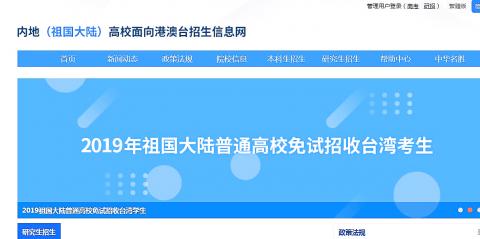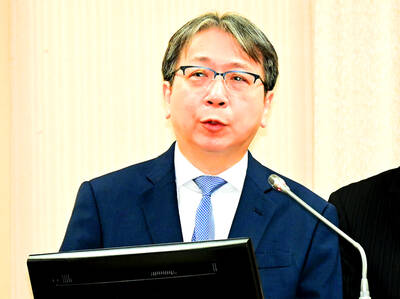Democratic Progressive Party (DPP) Legislator Lee Chun-yi (李俊俋) yesterday pledged to propose an “anti-united front act” based on US legislation to counteract “severe undermining of Taiwanese democratic values” by Chinese “united front” tactics.
Beijing’s tactics include actions such as purchasing Taiwanese produce, promoting travel to counties and cities governed by the Chinese Nationalist Party (KMT) and hosting Kaohsiung Mayor Han Kuo-yu’s (韓國瑜) visit to China last month, Lee said.
The world has recognized the threat of Chinese infiltration, he said, calling on the nation to face the issue.

Screen grab from the Internet
Other nations have enacted legislation to prevent infiltration via finance and media, Lee said.
“As the main target of Chinese infiltration and aggression, it is necessary to establish legislation to counter China’s ‘Anti-Secession’ Law,” Lee said.
Lee said his proposed act would focus on newer “united front” tactics that utilize media and commerce, while allowing extant laws to continue to govern their respective jurisdictions.
Lee said he is still drafting the bill and would reference US legislation, adding that the main difficulty would be defining what constitutes “united front” tactics, while observing the freedoms of speech and movement.
For politicians, short of declaring support for the “one country, two systems” concept, the freedom of speech should be respected, Lee said.
The lawmaker said he envisages creating a cross-agency task force to enforce the law, as the Mainland Affairs Council (MAC) and the National Communications Commission have their own areas of governance.
The National Security Bureau would be best suited for the duty, but it could not answer directly to the Legislative Yuan due to the nature of its responsibilities, Lee added.
In related news, China’s Fujian Province has completed preliminary studies on how to provide power to Kinmen and Lienchang counties, as well as water to Matsu, China’s Taiwan Affairs Office said.
Efforts to provide Kinmen and Lienchang counties with natural gas and the construction of bridges linking the islands to China’s Fujian are being mulled, it added.
Kinmen County Commissioner Liu Tseng-ying (劉增應) on March 20 said that he hoped the 2km bridge between the Huangqi Peninsula and Donggu Atoll (東古礁) would be prioritized.
The MAC has said that the bridge must be assessed and approved by the central government.
China’s policy of the “new four links” — water, electricity, natural gas and bridges — is geared to bring the residents of Kinmen and Matsu over to its side while pressuring the DPP administration, National Sun Yat-sen University professor Lin Wen-cheng (林文程) said.
From Beijing’s perspective, due to the counties’ locations and unique statuses, it could be easier for “united front” tactics to work there than in other counties and cities in Taiwan, Lin said.

The US government has signed defense cooperation agreements with Japan and the Philippines to boost the deterrence capabilities of countries in the first island chain, a report by the National Security Bureau (NSB) showed. The main countries on the first island chain include the two nations and Taiwan. The bureau is to present the report at a meeting of the legislature’s Foreign Affairs and National Defense Committee tomorrow. The US military has deployed Typhon missile systems to Japan’s Yamaguchi Prefecture and Zambales province in the Philippines during their joint military exercises. It has also installed NMESIS anti-ship systems in Japan’s Okinawa

TRAGEDY STRIKES TAIPEI: The suspect died after falling off a building after he threw smoke grenades into Taipei Main Station and went on a killing spree in Zhongshan A 27-year-old suspect allegedly threw smoke grenades in Taipei Main Station and then proceeded to Zhongshan MRT Station in a random killing spree that resulted in the death of the suspect and two other civilians, and seven injured, including one in critical condition, as of press time last night. The suspect, identified as a man surnamed Chang Wen (張文), allegedly began the attack at Taipei Main Station, the Taipei Fire Department said, adding that it received a report at 5:24pm that smoke grenades had been thrown in the station. One man in his 50s was rushed to hospital after a cardiac arrest

PUBLIC SAFETY: The premier said that security would be tightened in transport hubs, while President Lai commended the public for their bravery The government is to deploy more police, including rapid response units, in crowded public areas to ensure a swift response to any threats, President William Lai (賴清德) said yesterday after a knife attack killed three people and injured 11 in Taipei the previous day. Lai made the remarks following a briefing by the National Police Agency on the progress of the investigation, saying that the attack underscored the importance of cooperation in public security between the central and local governments. The attack unfolded in the early evening on Friday around Taipei Main Station’s M7 exit and later near the Taipei MRT’s Zhongshan

ON ALERT: Taiwan’s partners would issue warnings if China attempted to use Interpol to target Taiwanese, and the global body has mechanisms to prevent it, an official said China has stationed two to four people specializing in Taiwan affairs at its embassies in several democratic countries to monitor and harass Taiwanese, actions that the host nations would not tolerate, National Security Bureau (NSB) Director-General Tsai Ming-yen (蔡明彥) said yesterday. Tsai made the comments at a meeting of the legislature’s Foreign Affairs and National Defense Committee, which asked him and Minister of National Defense Wellington Koo (顧立雄) to report on potential conflicts in the Taiwan Strait and military preparedness. Democratic Progressive Party (DPP) Legislator Michelle Lin (林楚茵) expressed concern that Beijing has posted personnel from China’s Taiwan Affairs Office to its